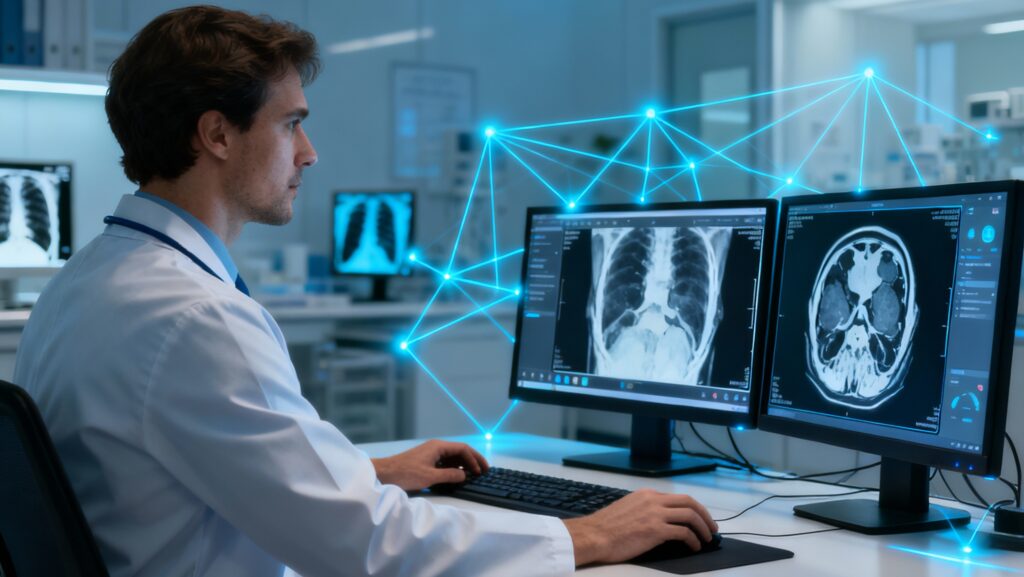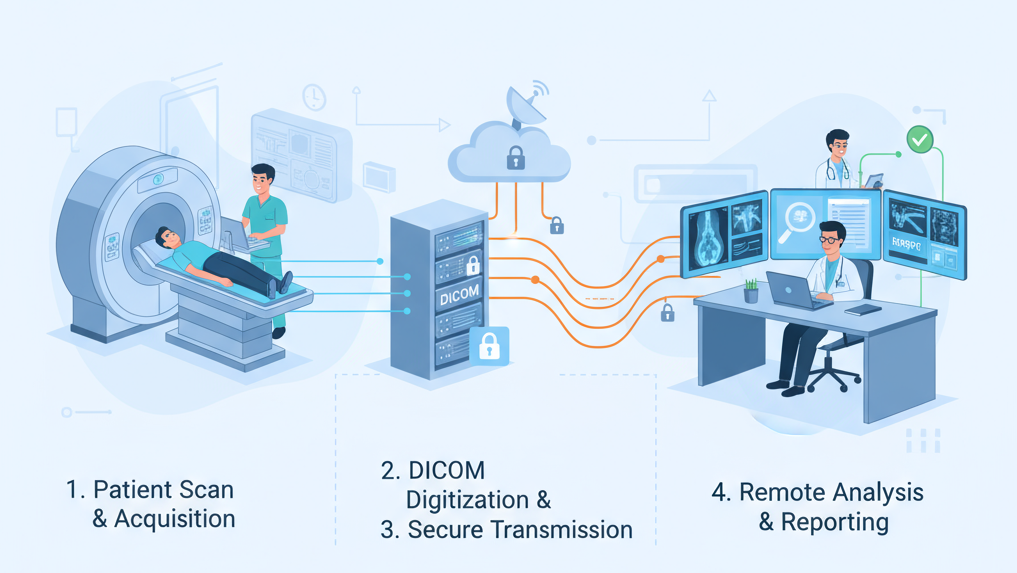What is Teleradiology?

Teleradiology involves transmitting medical images—like X-rays, CT scans, MRIs, and ultrasounds—from one location to another so a qualified radiologist can interpret them remotely. This technology ensures timely expert analysis, improving diagnostic efficiency and patient care. It is especially valuable in regions without on-site radiology specialists, bridging gaps in healthcare access, enabling faster decision-making, and supporting hospitals and clinics in delivering accurate, high-quality medical evaluations regardless of location.
How Teleradiology Works
In teleradiology, the process begins with a patient undergoing a scan or diagnostic test at a hospital, clinic, or imaging center. The resulting medical images are then digitized, often in the DICOM format, and securely transmitted via encrypted internet connections to a remote radiologist. The radiologist analyzes the images, interprets findings, and generates a detailed report, which is sent back to the referring physician, ensuring timely and accurate diagnosis regardless of location.


